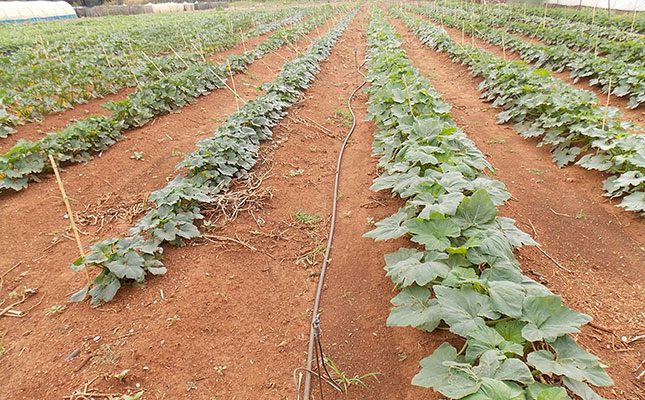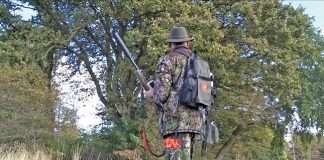
Photo: Bill Kerr
Hand-weeding cucurbits is a labour-intensive operation and therefore expensive. It also has the disadvantage of recreating an environment where more seeds are stimulated to germinate.
After land preparation and irrigation, any seeds ready to germinate are likely to do so. If the soil is left undisturbed, only a few will germinate in the short term. By hoeing and cultivating, you’ll bring more viable seeds to near the surface and create a favourable environment for them to germinate.
If you don’t apply herbicide, you will probably have to carry out repeat cultivations. In the case of pumpkins, which are spaced fairly wide apart in the row, you can run a tractor with a suitable implement to clean between the rows until the runners prevent further cultivation.
If the tractor cannot fit between the rows, you can use a tiller. With the tractor running down the row with Duck Foot paddle tines set either side of the row, you can do shallow cultivation and leave a narrow strip for hand cultivation.
If you get your timing right, you can carry out hand cultivation where the crop leaves cover the vacant area between plants before the weeds begin to grow again.
Paraquat
There are few really safe herbicides registered for cucurbits, but I have used some pre-emergence products very successfully. Most of these are more effective against grasses than broadleaf weeds; the product you choose will depend on the land’s weed spectrum.
Another option I employed successfully in the past was paraquat, with fan nozzles set at as low a pressure as possible to reduce spray drift. A worker walked on either side of the sprayer dragging a sheet of roofing plastic. The spraying was done between the sheets so that the product was prevented from wetting the leaves.
A huge area can be covered within a day and at relatively low cost with this method. Of course, it has to be carried out when there is no wind.
You can also add a surfactant, which is used for aerial spraying; this reduces the chances of the droplets becoming windborne. The land must be uniformly flat to prevent spray from getting under the sheets.
When weeds are good news
I have come across pumpkin farmers in hot regions who actually want weeds on their land in the later growing stages in summer. They practise weed control up to a point and then allow weeds to grow.
They claim that when the pumpkins begin to mature, their growth ceases and the weeds then protect the pumpkins from sunburn until harvest. At this stage, there is little competition between the weeds and pumpkins for nutrients.
Sunburn is less of a problem with white pumpkins, but grey pumpkins are more prone to it. The darker the grey, the more vulnerable they are.
Bill Kerr is a vegetable specialist and breeder.











